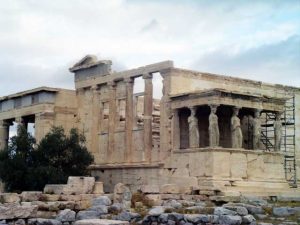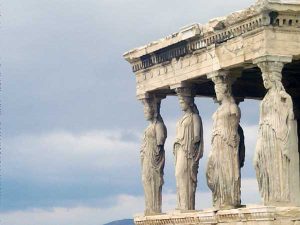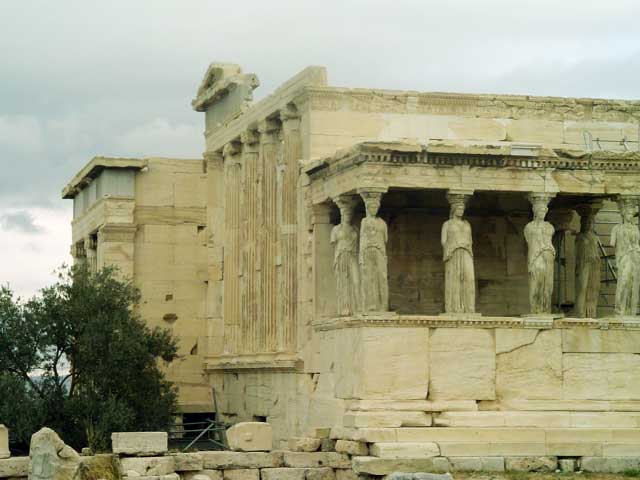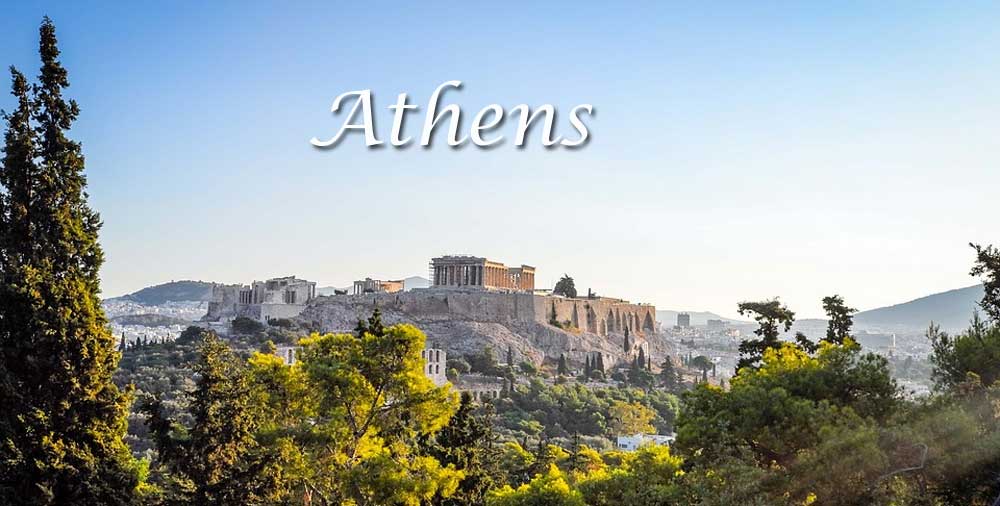The temple of Erechtheion and the Caryatids on the Acropolis

Its architect was probably Mnisiklis and the building owes its name to an altar that was dedicated to the legendary hero Erichthonio. The sculptor of the building was Phidias, who had been appointed by Pericles to decorate the Erechtheion and the Parthenon.
There are some who argue that the temple was built in honor of King Erechtheus, who is believed to be buried nearby. Erechtheus is mentioned in Homer’s Iliad as a great king and ruler of Athens during the Archaic Period, and Erechtheus and Erichthonius were often identified. It is believed that the temple replaced the Sanctuary of Polias Athena, which was built during the reign of the Peisistratids and was destroyed by the Persians in 480 BC.
The need to preserve many objects related to sacred rituals explains the complex design. The main building consists of four parts. The largest of these is the eastern nave, with an Ionic portico as a propylon at its eastern end. Other modern views consider that the entire interior space on the lower NW level and the eastern propyla was used for access to the altar of Athena Poliadas via a portico and stairs, as well as a public viewing platform.
The whole temple is built on a slope so the northwest side is about 3 meters lower than the southeast side. It was built exclusively of Pentelic marble, with diazomes of black limestone from Eleusis, which bear relief sculptures of white marble.
It had elaborately carved windows and doors and the columns were elaborately decorated (more so than seen today). They were painted, gilded and accented with gilded bronze and inlaid with colorful beads.
The Caryatids

The Erechtheion was associated with the most ancient and sacred relics of the Athenians: The Palladium, which was the xoano (wooden bust of Athena which fell from the sky – not made by man) of Athena Polias (Patron of the City), the marks of the trident of Poseidon and the well of sea water which resulted from the blow of Poseidon.
The sacred olive tree which sprouted when Athena struck a rock with her spear during her successful dispute with Poseidon over the city, the supposed burial grounds of the mythical kings Cecrops and Erechtheus, the sacred temples of Cecrops’ three daughters, Ersis , Pandrosos and Aglauros and those of the heroes of the tribes, Pandion and Vouti. An olive tree still stands on the West side of the Erechtheum, but it was planted in modern times by Queen Sophia, granddaughter of Queen Victoria, in honor of the Athenians.
The eastern part of the building was dedicated to Athena Poliada, while the western part was the place of worship of Poseidon and Erechtheus. There were the altars of Hephaestus and Boutis, brother of Erechtheus.

